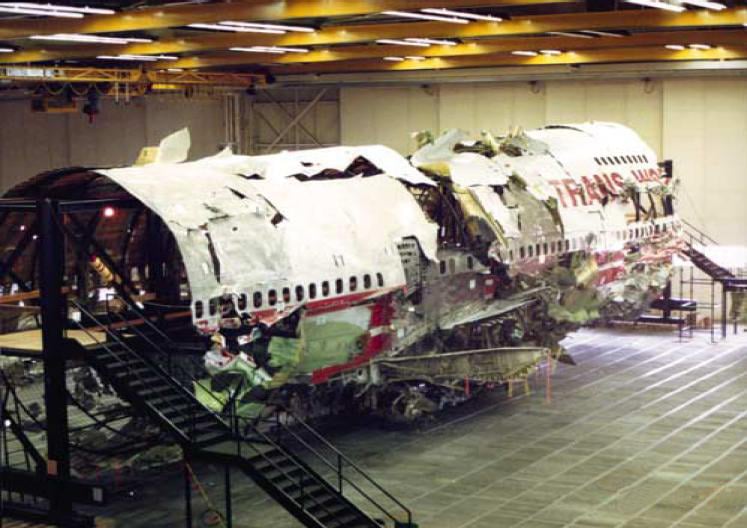How To Investigate A Plane Crash
Commercial aircraft safety has improved dramatically over the years, but the history of aviation is replete with tragic incidents that cost many lives. When these incidents occur, it’s up to plane crash investigators to discover what went wrong and how to prevent future accidents. John Purvis and Barry Latter, both of whom were engineers at Boeing, explain the basics of investigating a crash and how they discover what went wrong.
ASSEMBLE THE TEAM
Before any actual investigating happens, the people doing the investigating have to gather and organize their roles and responsibilities.
The airplane manufacturer assembles two teams: one on-site (the team that John Purvis directly worked with), and another team of specialist engineers within the airplane program (the team that Barry Latter manages). Information passes between all the team members as needed to get a complete picture of what happened.
Representatives from the airlines, aircraft manufacturers, the NTSB (National Transportation Safety Board), the FAA (Federal Aviation Administration) and other national agencies also get involved as necessary. In the US, an official from the NTSB usually directs the investigation and provides leadership to the investigators.
Back in Purvis’ day, the investigative team would exchange mailing addresses, phone numbers, and affiliations. Now, with improved communications tools, these exchanges happen more efficiently and with the help of numerous digital platforms.
GET, AND SHARE, ALL INFORMATION
Once the team is assembled, each investigator is responsible for a particular segment of the investigation. There are experts dedicated to gathering information about the conditions of the airframe, electronics, engines, etc.
A lot of information can also be found in the flight recorder and the cockpit voice recorder. The flight recorder holds information about the plane’s altitude, speed, attitude, and direction. “It will also tell you what switches were in what position and whether the gears or flaps are down, and what RPM the engines were running at,” says Latter.
The cockpit voice recorder contains the last 30 minutes of the cockpit’s communications, but barely anyone in the investigation team listens to this recording unless they absolutely must hear it.
During the investigation, the team must remain open minded and not jump to conclusions. “It’s important that the conclusion of any accident report fits all of the data not just part of it,” says Latter. The narrative that investigators craft about how the accident happens must match the kinds of damage they observed in the aircraft.
After the investigation, “the industry comes together to share information between technical groups and pilot groups from other companies,” says Latter, so that the same issue with one plane does not affect more than one airline.
RECONSTRUCT THE INCIDENT
While the team at the crash site gathers information, the aircraft manufacturer’s engineering team recreates the incident using models and mathematical formulas. This is where the expertise of Latter and Purvis come in. They work on creating models of the incident to match the data gathered by the crash team site. Most of the time, the engineering team can recreate certain conditions in a lab and introduce failure modes that confirm the data found in the flight recorder and out in the field.
Sometimes, though, accident reconstruction occurs in an improvised laboratory and with the help of locals, like when the NTSB, FAA, and Boeing investigated the crash of TWA 800, which crashed over the waters of Long Island in what was widely assumed to be a terrorist attack. “They hired scallop fisherman who used rakes dragged behind boats looking for airplane parts, which came back to a hangar at an old aircraft manufacture facility,” recalls Purvis, who worked that investigation.
The four-year process of investigation and re-assembly revealed a bulge in the center wing tank, which indicated an explosion that originated from inside the wing; in other words, the accident was not caused by external sources.
This revelation spurred Boeing to develop a fuel tank inerting mechanism that would prevent the fuel-air ratio in the wings from reaching a flammable point.
DON’T PANIC
Keep in mind that plane crashes represent a tiny percentage of the incidents that investigators work on. Most aircraft investigations concern minor incidents that can be solved without visiting a crash site.
Most importantly, notes Latter, “Boeing airplanes are designed so that no single failure will hazard the airplane. If a single failure does hazard the airplane, the design team assumes that it happens and designs provisions into the airplane that allow you to mitigate the effects of that failure.” And it’s not just Boeing—in these days of increased commercial airline travel, all aircraft manufacturers are held to the highest safety standards because they have learned from the results of crash investigations led by experts like Purvis and Latter.
Want to exercise your own investigation skills?
Check out Detective Day!
Photo courtesy of NTSB.

